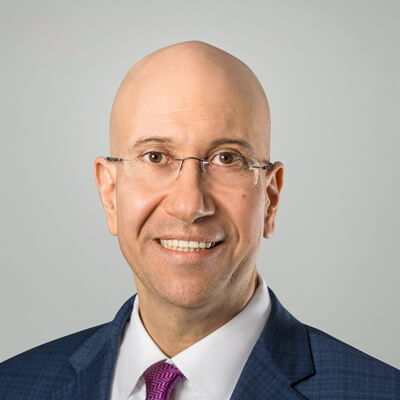Originally Published in

April 13, 2021
By Shimon Shkury, Ariel Property Advisors
Read The Article on Forbes
If you’re a real estate owner or investor, you may have noticed a significant increase in insurance costs compared to previous years. In fact, renewal increases have jumped 20% year-over-year, according to Q3 2020 data from Marsh’s Global Insurance Market Index, a measure of global commercial insurance premium pricing.

Shimon Shkury,
President and Founder,
Ariel Property Advisors
“This increased expense can affect a property’s net operating income (NOI) and thus its bank and appraisal valuation,” explained Matt Swerdlow, Director, Capital Services, Ariel Property Advisors. “Higher expenses and a lack of rent growth in NYC will lead to some borrowers facing difficulty in refinancing their existing mortgages. Because higher insurance costs eat into a property’s bottom line, this trend of climbing premiums is one that commercial real estate investors need to manage actively.”
Property and liability insurance for commercial real estate is usually bundled and provides protection against damage, fire, theft and third-party claims. Property insurance is one of the “must-have” items on a building’s expense list and the recent jump in insurance premiums raises the question of what exactly is causing these spikes.
“When it comes to insurance, today’s market has fewer carriers, less competition, less broad coverage and higher premiums,” noted Swerdlow. “Both global and local factors are creating this trend.”
First, today’s low-interest-rate environment is preventing insurance companies from achieving the typical level of yield they would expect through normal investment activity. Since today’s returns are not sufficient enough to cover existing settlements and new claims, carriers are forced to increase premiums to offset the difference while still creating shareholder value.
In fact, historic jumps in the occurrence and magnitude of natural catastrophes has forced carriers to pay larger settlements with higher frequency. When insurance companies find themselves in an environment of increased payouts they’ll raise overall premiums across the board in order to cover their increased obligations.
Longer lead times to settle claims from a backlog in open cases throughout the COVID-19 pandemic has also contributed to some carriers refusing to provide certain coverage at all.
According to a survey from The Council of Insurance Agent and Brokers, 90% of respondents reported carrier capacity for Umbrella risk decreased in Q3 2020, demonstrating a significant crisis in capacity for the line. Nearly 80% of respondents also said that capacity for Commercial Property was cut substantially in Q3 2020.
In New York City, substantial hikes to insurance premiums over the past few years have made it more difficult for landlords to manage their expenses actively.
“In 2017, it was a typical assumption by an apartment landlord to pay about $500 per unit in insurance costs. The figure now hovers closer to $650-$750 per unit, or even higher for deeply rent-stabilized properties because of perceived infrastructure concerns,” Swerdlow said.
How This Affects NYC’s Rent-Stabilized Apartments
Rent-stabilized buildings are prone to deferred maintenance and so they often encounter more HPD and DOB violations. The Housing Stability & Tenant Protection Act of 2019 (HSTPA) is magnifying this issue, deterring landlords from addressing these repairs and allowing them to accumulate.
Rent-stabilized apartment buildings in the Bronx, for example, are suffering disproportionately from insurance pricing spikes. There is a lack of insurance carriers servicing the Bronx and many carriers don’t provide lead coverage for properties built between 1960 and 1978. Ariel Property Advisors has observed in some cases that typical premiums in the Bronx could exceed $1,000 per unit.
“When facing increased expenses, landlords typically will increase rent to cover this growth. But the HSTPA has capped rent increases on rent stabilized buildings to less than 2% Y-O-Y. Everyone in the city knows taxes and utilities go up every year but now insurance costs are rising dramatically as well,” Swerdlow said.
Typically, NYC borrowers refinance every five years and hopefully return some equity during the process. However in 2021, stagnant rent growth, occupancy struggles, and collection issues coupled with increased cap rates for these properties has dramatically pushed down values. This could result in a “cash-in” refinance, where the new loan is smaller than the existing loan. Ultimately, borrowers will be left with contributing fresh cash equity in order to close the refinancing or considering a sale.
One of Swerdlow’s clients in the Bronx, in the midst of a dwindling carrier supply, needed more than a month to find a competitive policy. Swerdlow notes, “When facing a time of the essence closing or an existing loan maturity, borrowers don’t have much time to shop for a better policy. It’s crucial now that landlords act proactively to avoid these situations down the road.”
On another assignment in South Carolina, Swerdlow and his team observed a $50,000 per year increase in premiums due to a lender’s heightened insurance requirements stemming from an item that came up on the Property Condition Assessment (PCA) and a recent tornado. The resulting decrease in net operating income would have made the transaction unfeasible if it weren’t for Ariel Property Advisor’s inserting an insurance specialist to restructure the borrower’s umbrella coverage. This allowed for a lower premium on the subject property and generated enough Net Income to close the refinance at the quoted terms.
What Owners Should Do Now
Swerdlow recommends that owners should become familiar with their current policies prior to or early in the financing process to avoid any surprise pitfalls. Now more than ever it’s important to make sure one has the right relationships in place to find creative solutions to help reduce the cost of their insurance. Insurance specialists can look through one’s policies to see if there is any extraneous coverage and provide active risk management to implement different loss control strategies to potentially limit the severity or reduce the impact of a claim.
More information is available from Shimon Shkury at 212.544.9500 ext.11 or e-mail sshkury@arielpa.com.